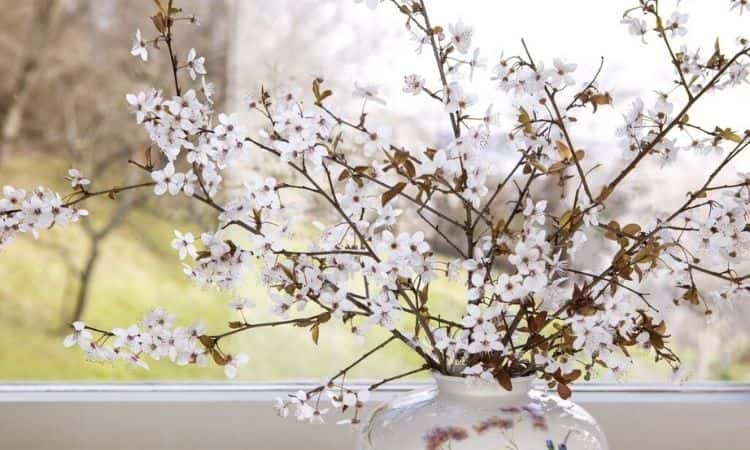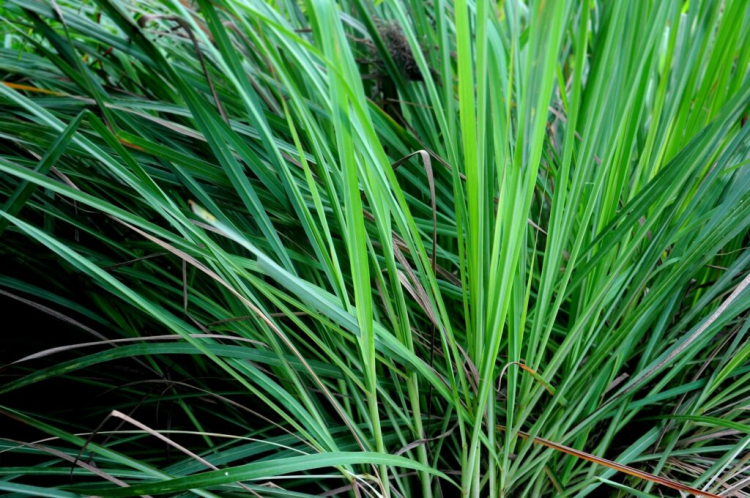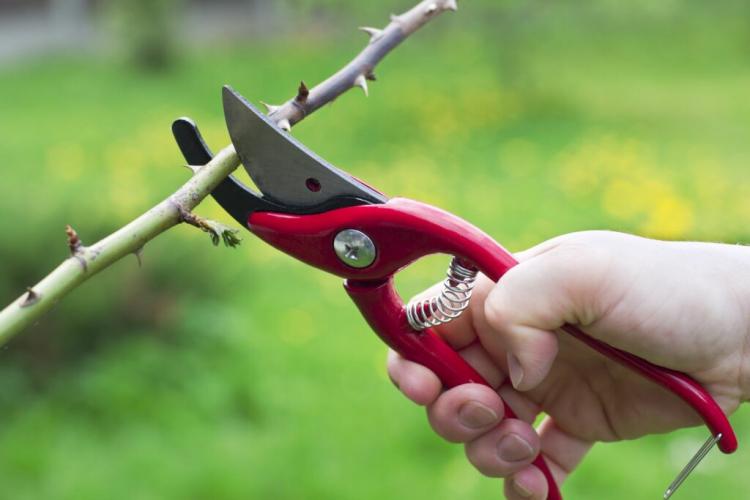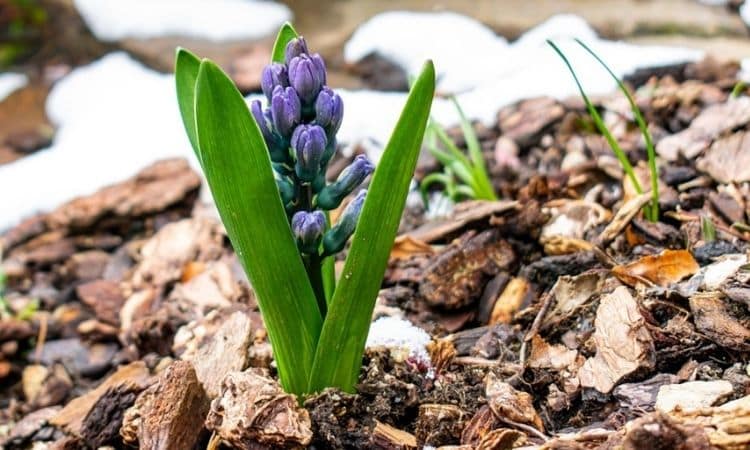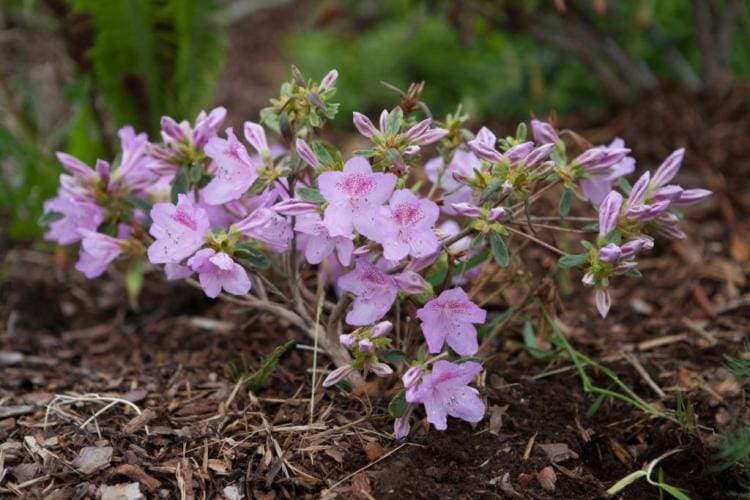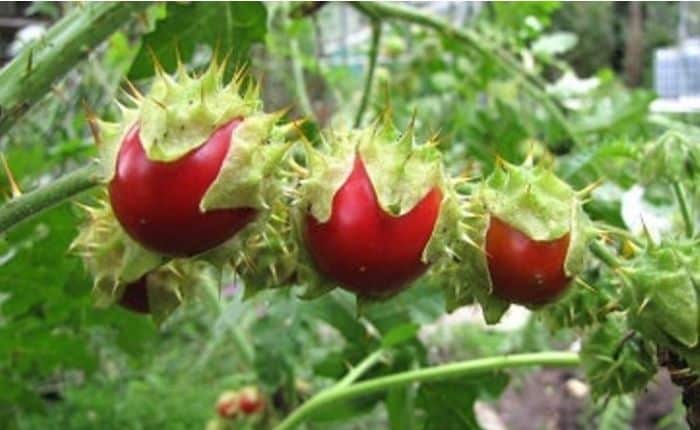Saint Barbara Branches: Pruning, Blossoms And Care For German Culture
In early December, branches of fruit trees can be pruned and placed in the warm. At Christmas, Saint Barbara branches delight many with their flowers. In many households at Christmas, you can find blossoming cherry branches or the branches of other fruit trees and ornamental shrubs. The tradition of the Barbara branches goes back to the Christian faith.
Other cultures and religions also have customs that involve cut, prematurely blooming shoots, or even whole branches. Saint Barbara branches are more than just a nice decoration; like lead casting or the onion calendar, they are among the so-called oracle customs. What it is about the Barbara twigs and which trees are suitable for Barbara twigs, you will learn in our article.
Saint Barbara branches: history and meaning of the custom
Table of Contents
Saint Barbara branches are not only a beautiful sight in winter, but also look back on a long tradition. In fact, the custom of Saint Barbara branches can be traced back to the history of Saint Barbara: In 306 A.D., the daughter of a wealthy merchant is said to have had herself secretly baptized and was consequently sentenced to death.
On the way to the prison cell, a twig allegedly got caught on her robe. Saint Barbara put the twig in a vessel with water. On the day of her execution, the unleafed branch miraculously bore blossoms – the legend of the Saint Barbara branches was born.
To this day, the story of the Saint Barbara branches is often told during the Christmas season. In the meantime, various regional myths and legends have developed. For example, blossoming Saint Barbara branches at Christmas are said to bring good luck for the coming year.
In addition, the flowering branches are used in some regions for predictions or as an oracle – for example, in the selection of the groom: Each branch is assigned the name of a suitor, the first to bloom signals which of the suitors is the right one.
In addition, the number of blossoms used to be taken as an indication of the expected harvest. Nowadays, it is a popular custom to use the Saint Barbara branches as an oracle for the lottery numbers.
Saint Barbara branches: Which tree is suitable?
In order to have really blooming branches at Christmas, not only the timing of pruning is crucial, but also the selection of the right tree. But which tree is suitable for Saint Barbara branches? Classically, on St. Barbara’s Day, December 4, cherry branches are pruned and brought into the house.
However, in addition to flowering cherry branches at Christmas, Saint Barbara branches from the apple tree are also very popular. There is a whole range of trees that can be used as Saint Barbara branches.
In fact, almost any fruit tree, such as pear (Pyrus), plum (Prunus domestic), or plum (Prunus domestica subsp. Domestica) is suitable for Saint Barbara branches at Christmas. Chestnuts (Castanea) and wild shrubs such as cornelian cherry (Cornus mas) and blackthorn (Prunus spinosa) are also suitable.
If you want to get fancier, you can prune your Saint Barbara branches in the ornamental garden: Lilac (Syringa vulgaris), forsythia (Forsythia), and winter jasmine (Jasminum nudiflorum) are just as suitable as broom (Genista), almond trees (Prunus dulcis) or ornamental fruit.
These trees are suitable for pruning Saint Barbara branches:
- Fruit trees and shrubs: cherry, apple, plum, quince, plum, cornelian cherry, sloe.
- Ornamental shrubs: ornamental cherries, blood plums, lilacs, forsythia, almond trees, ornamental currant, witch hazel, ornamental quince, broom
- Others: chestnut, hazelnut
Prune Saint Barbara branches: Timing and procedure
To enjoy lush blooms at Christmas, branches should be pruned from the tree around St. Barbara’s Day, which is December 4. Once you have found the right tree, you should also pay close attention to the selection of the branch. Branches from young trees are often less suitable because sometimes they do not yet form flowers or hardly any.
Better suited are older trees in your garden, which are already known for their eagerness to bloom in the spring. When choosing, make sure to select a branch with as many thick and rounded buds as possible – in contrast to the rather slender leaf buds, flowers usually sprout from them.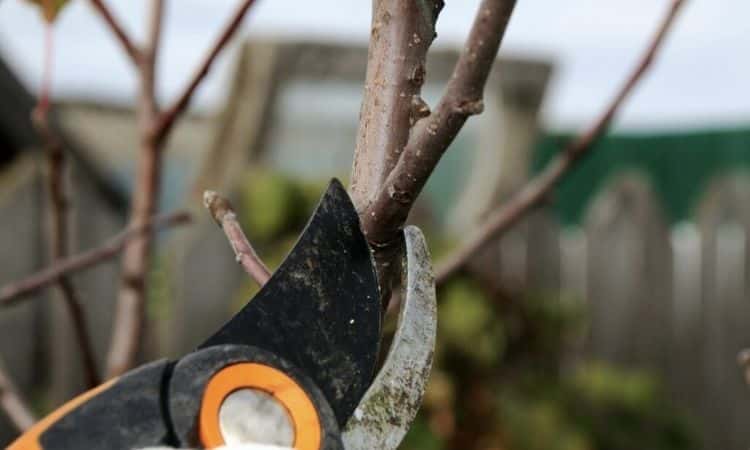
Saint Barbara branches to bloom
In order for the cut branches to actually begin to bloom, it is important that they have previously experienced cold temperatures. In fact, dormancy can only be broken when the tree has experienced a certain number of hours of cold with temperatures below 44,6 °F.
Only when this has happened, the Saint Barbara branches sprout flowers in the warm apartment. If colder temperatures did not prevail until December, there is a trick to make Saint Barbara branches bloom anyway: Freeze the branches.
Just one night in the freezer can complete the cold stimulus. If November is particularly warm, it’s a good idea to put the branches in the freezer for several days to make sure they get the necessary chilling hours.
In this case, however, prune the Saint Barbara branches a few days early and take them out of the refrigerator on December 4 to ensure they bloom appropriately for Christmas. Before placing Saint Barbara branches in water, it is necessary to cut them at the bottom as diagonally as possible – this maximizes the surface area for water absorption.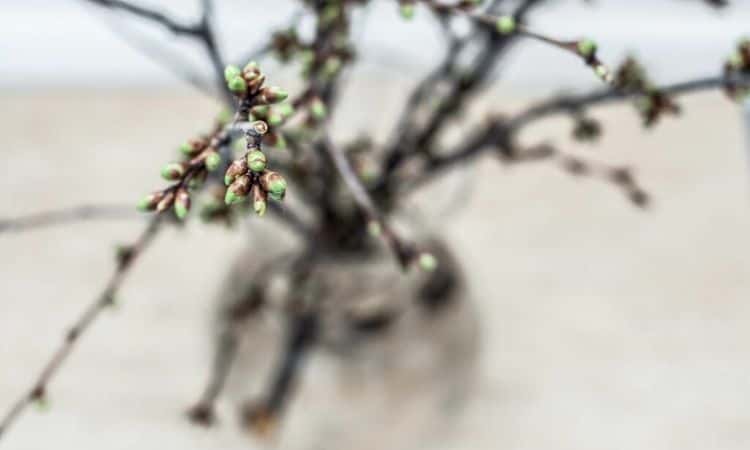
After the cooling period in the freezer or refrigerator, it is better to place the branches in a cool room for another day and not in the warm living room. In this way, the likelihood of a vigorous bloom is again increased.
Once you have placed the Saint Barbara branches in water, most of the work is already done. Only the right location should still be chosen: Although the Saint Barbara branches need warmth to start flowering after the cold stimulus and the short rest period, an overly warm room with dry heating air will quickly dry out the buds.
Therefore, a moderately warm room that is regularly ventilated is more suitable. To make Saint Barbara branches bloom even more beautifully, it is advisable to regularly change the water in the vase with new water that is as low in lime as possible.
This promotes the vitality of the branches is thus also conducive to flowering. In addition, you can spray the Saint Barbara branches with a little water every day, so that the buds remain fresh and are not attacked by the dry heating air.
Saint Barbara branches to bloom at a glance:
- If there has been no frost yet, put it in the freezer/refrigerator overnight or for several days if necessary.
- Place branches in a vase, cutting at an angle beforehand if possible.
- Then place in a cool room, such as the hallway, for another day.
- Move branches in vases to a moderately warm location in the home, where they will remain until Christmas.
- Change the water regularly (for example, every three days).
- Spray buds with water daily.
Not only Saint Barbara branches put us in the Christmas spirit in December. Which plants are also not to think out of the Advent season, you will learn in our article about the 10 most beautiful Christmas plants.
